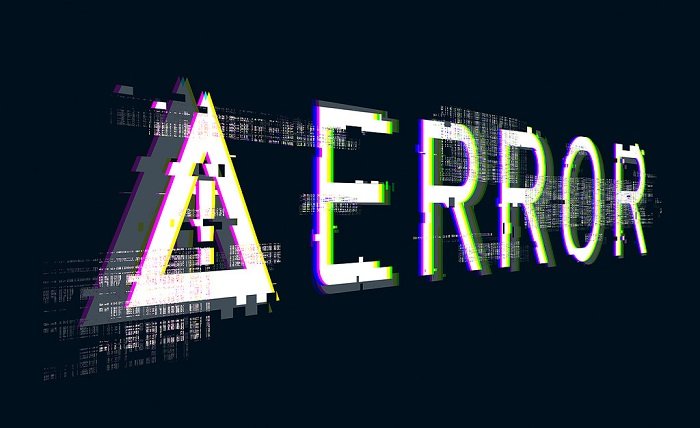Solving: Errordomain=nscocoaerrordomain&errormessage=could not find the specified shortcut.&errorcode=4. Error messages act as guides, aiding developers in locating and resolving code issues, integral to development. Developers often face the NSCocoaErrorDomain issue, error 4, with the “Could Not Find the Specified Shortcut” message in macOS/iOS apps. This page explores the complexities of this mistake, suggests some possible reasons, and provides a thorough troubleshooting and resolution guide.
What is
“errordomain=nscocoaerrordomain&errormessage=could not find the specified shortcut.&errorcode=4”
The ‘errordomain=nscocoaerrordomain&errormessage=could not find the specified shortcut.&errorcode=4’ error is a component of Apple’s Cocoa error handling framework. It manages errors that are unique to Cocoa applications. If you encounter an error within this domain, it signifies that there has been an issue related to the Cocoa frameworks in your application.
In software development, the error domain refers to a collection of various errors linked to a particular library, file system, or framework. These domains aid in precisely identifying the source and type of error.
Reason Behind This Error
On MacOS, shortcuts are convenient quick paths to access your needs or open specific apps. However, these shortcuts can occasionally become corrupted, often because the app needs an update or due to a system malfunction. When your iOS system attempts to use these broken shortcuts, it becomes confused and displays an “error domain” error.
4 Common Reasons Behind This Annoying Error (“Errordomain=Nscocoaerrordomain&Errormessage=Could Not Find The Specified Shortcut.&Errorcode=4”)
Several factors can lead to this error message. If you come across the “ErrorDomain=nsCocoaErrorDomain&ErrorMessage=Could Not Find the Specified Shortcut.&ErrorCode=4” error on your macOS device, it means the system can’t find the specific shortcut or key combination needed to perform a particular function. Here are some common causes:
- Changes made to shortcuts can trigger this error message if the shortcuts are altered, modified, or updated.
- Outdated or inadequate applications can cause issues related to shortcuts.
- Conflicts arise when two applications try to use the same shortcut.
- Furthermore, incomplete installation of an application or missing files can also be factored in causing this error.
How to fix “errordomain=nscocoaerrordomain&errormessage=could not find the specified shortcut.&errorcode=4”
Solution 1: Perform a System Restore
You can use a system restore to return your computer to a previous working state. Here’s how to do it:
Click the Start button and type “System Restore” in the search box.
From the search results, select “Create a restore point.”
Click on the “System Restore” button.
Follow the on-screen instructions to choose a restore point and finish the process.
Solution 2: Reinstall the Application
Reinstalling the problematic application can help fix corrupted or missing files.
Here are the steps to reinstall the problematic application:
- Uninstall the application by going to the Control Panel, clicking “Programs and Features,” and selecting the application from the list.
- Download the latest version of the application from the official website.
- Install the application by following the on-screen instructions.
Solution 3: Restore Deleted Files
Suppose the error is due to missing or deleted files. In that case, you can attempt to recover them using a file recovery tool. Here’s how:
Download and install a dependable file recovery tool, such as Recuva or EaseUS Data Recovery Wizard.
Open the file recovery tool and follow the instructions on the screen to recover the deleted files.
Solution 4: Fix Broken Registry Keys
It can lead to errors or corrupt registry keys. To resolve this issue, you can use a registry cleaner tool.
Here are the steps to use a registry cleaner tool to fix broken or corrupt registry keys:
Download and install a trustworthy registry cleaner tool, like CCleaner or Wise Registry Cleaner.
Open the registry cleaner tool and start a registry scan.
Follow the instructions on the screen to address any problems detected during the scan.
Solution 5: Update Your Operating System and Applications
It’s essential to keep your operating system and applications updated to prevent errors.
Here’s how to update your system:
Click the Start button and type “Windows Update” in the search box.
Select “Check for updates” from the search results.
Follow the on-screen instructions to install any available updates.
Moreover, keep your installed applications up to date by checking for updates directly within the application or by visiting the developer’s website.
Solution 6: Use Reliable Antivirus Programs
Malware or virus infections can cause errors on your computer. It is essential to use a dependable antivirus program to protect your system.
Here’s how to keep your computer protected with an antivirus program:
Download and install a trustworthy antivirus program, like Norton, Bitdefender, or Avast.
Run a full system scan to identify and eliminate any threats.
Keep your antivirus software up to date and perform regular system scans to ensure ongoing protection.
Diagnostic Tools And Techniques:
Navigating through the world of error codes, particularly the Errordomain=nscocoaerrordomain&errormessage=could not find the specified shortcut &errorcode=4, can seem like a daunting task. However, with a clear understanding of the error and a systematic, step-by-step approach, it becomes manageable.
The crux of Error Code 4 is the inability to access a file or directory. This may stem from incorrect file paths, inadequate permissions, software conflicts, or even corrupted files within the software itself. Addressing each potential issue individually increases our chances of successfully resolving the error.
We started by verifying the file path and existence. If this didn’t solve the problem, we examined file permissions to ensure we had the necessary access rights. If the error persisted, we considered potential software conflicts that could be causing disruption. Finally, if all else failed, we proposed completely reinstalling the originating software to rectify any deeper corruption issues.
The key to successful troubleshooting lies in patience, precision, and persistence. Remember, each error code is a puzzle waiting to be solved, a mystery waiting to be unraveled, and each resolution is a step toward building a more robust and reliable application.
By understanding the NSCocoaErrorDomain Error Code 4 and following these methodical steps, we can rectify this error and deepen our knowledge about the intricate workings of software applications, making us better equipped to tackle future challenges.



